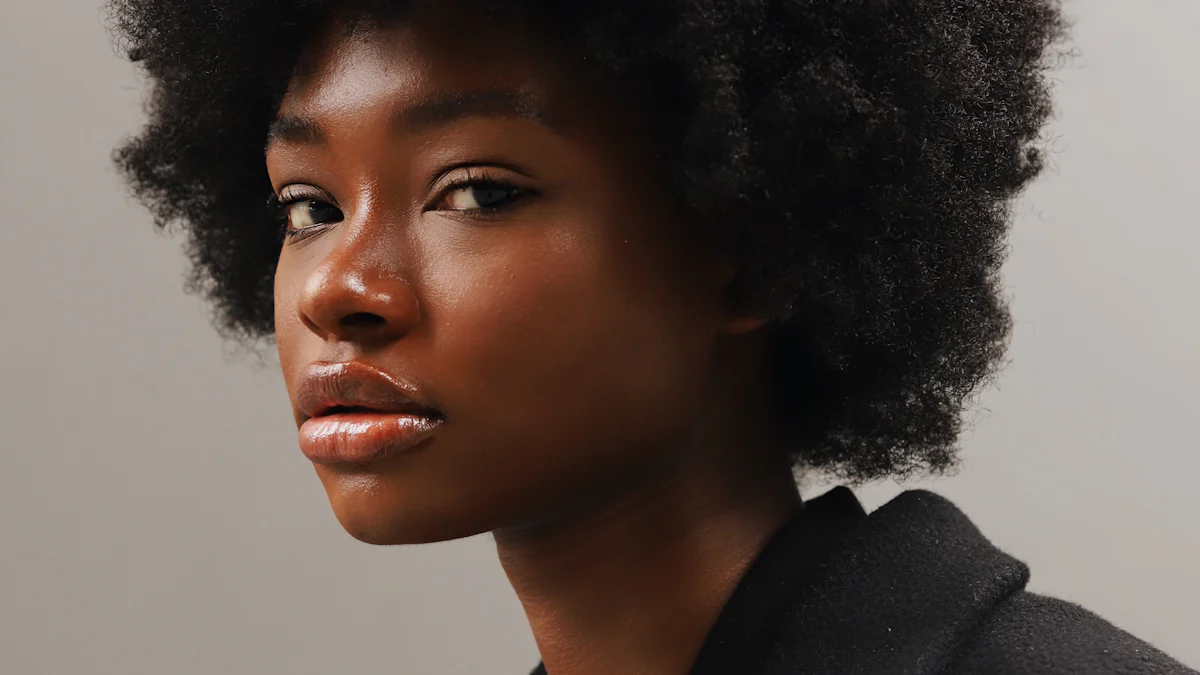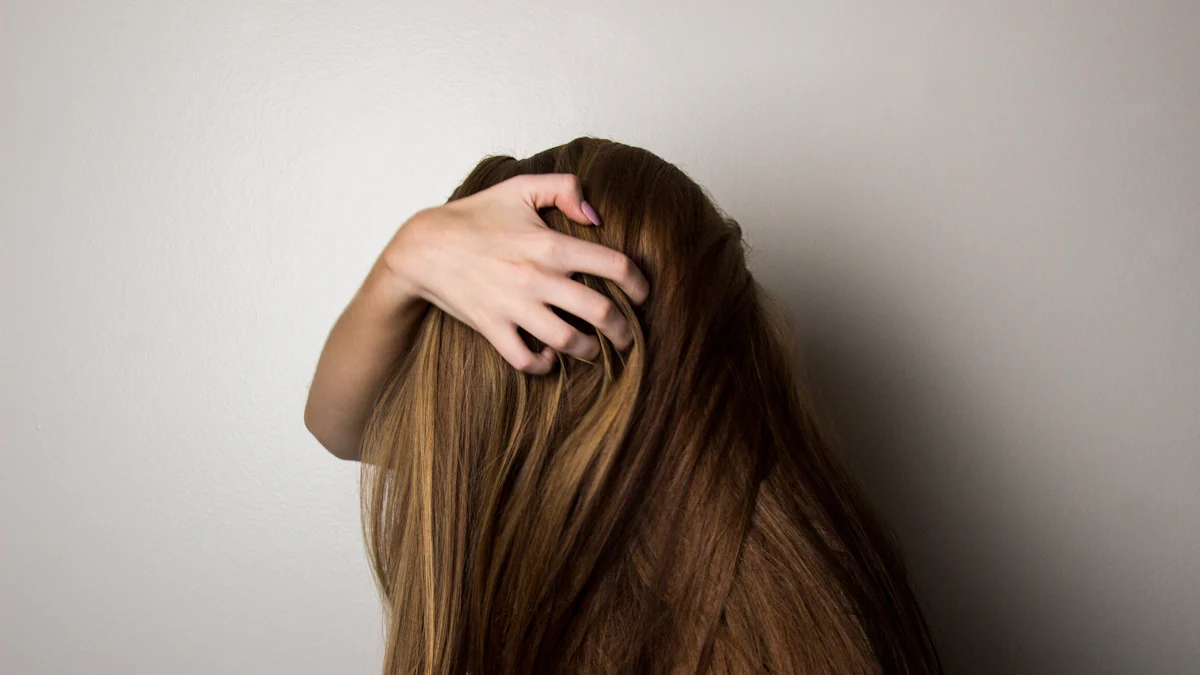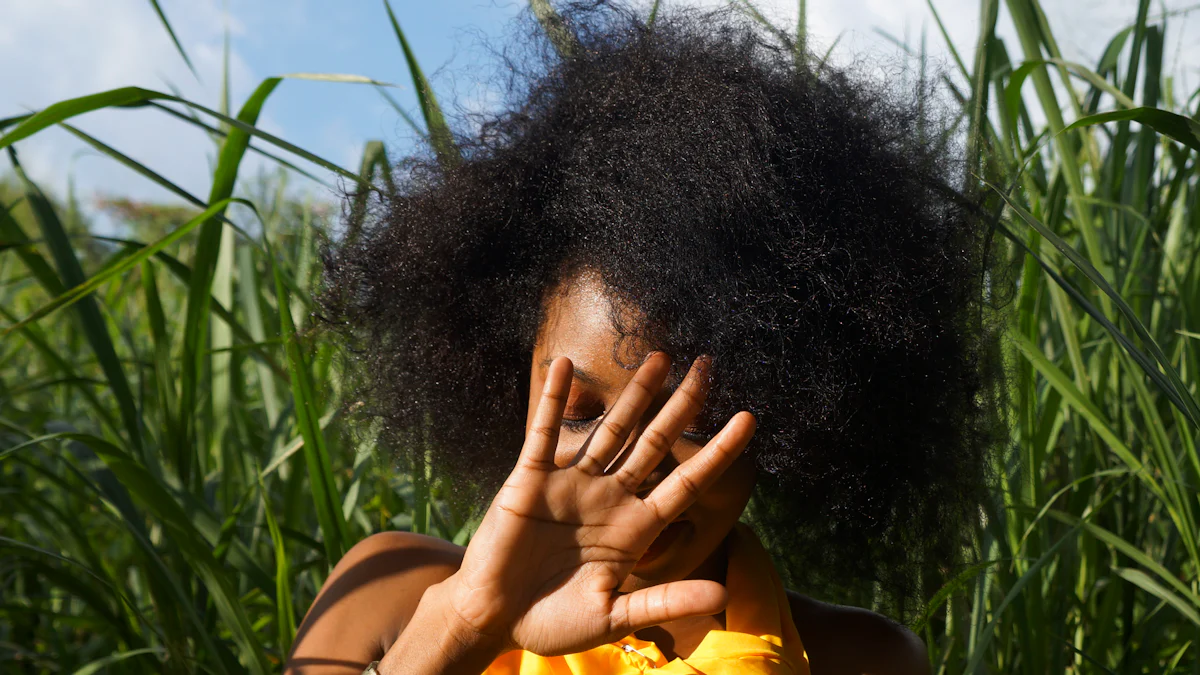Understanding the Big Chop in Hair Care

The term "Big Chop" refers to cutting off all chemically processed hair to reveal natural hair texture. This practice holds historical and cultural significance, particularly within the Black community. The Big Chop symbolizes a physical and mental rebirth, allowing individuals to embrace their natural hair while eliminating damage from heat and chemical treatments. Many choose this path to improve hair health and foster a greater appreciation for natural tresses. For those who have undergone the big chop, the Luvmeforyou Kinky Straight U Part Quick & Easy Affordable 100% Human Hair Wig offers a seamless blend with natural hair, providing a flawless look in minutes. This U part wig is perfect for those seeking a better length u part wig that complements their new natural hair journey. The Big Chop also aligns with the natural hair movement, encouraging people to celebrate their natural beauty and cultural identity.
The Journey to the Big Chop

Recognizing the Need for Change
Signs your hair needs a fresh start
Many individuals notice signs indicating the need for a fresh start with their hair. Unmanageable hair often signals the necessity for change. Split ends and excessive breakage also point to damaged hair. Boredom with the current hairstyle can drive the desire for transformation. Life changes, such as starting a new job or moving to a new city, often inspire people to consider the Big Chop. These signs collectively highlight the need for a healthier hair journey.
Emotional and psychological readiness
Emotional readiness plays a crucial role in deciding to do the Big Chop. Abdullah believes that comfort with embracing short hair marks the first step in determining readiness. Confidence in one's appearance significantly impacts the decision-making process. Samiria emphasizes that doing the Big Chop requires strength. The mental preparation for this change involves accepting a new look and the reactions of others. Understanding the emotional journey helps in making an informed decision.
Preparing for the Big Chop
Research and inspiration
Research forms the foundation of preparing for the Big Chop. Many individuals turn to blogs, YouTube videos, and social media for inspiration. The author from the Naturally Happy Kinky Hair Blog suggests timing the Big Chop carefully. Gathering information about the process and outcomes aids in setting realistic expectations. Inspirational stories from others who have undergone the Big Chop provide motivation and guidance.
Finding the right stylist
Choosing the right stylist ensures a smooth Big Chop experience. A skilled stylist understands the significance of this transformation. Recommendations from friends or online reviews help in finding a trusted professional. Consultation with the stylist before the chop allows for discussing preferences and concerns. A good stylist offers advice on maintaining and styling newly chopped hair.
Gathering the necessary tools and products
Proper tools and products are essential for post-chop care. High-quality scissors ensure a clean cut. Moisturizing shampoos and conditioners keep the hair hydrated. Leave-in conditioners and oils help in maintaining softness and shine. The author from the Coming to Spain Blog highlights the importance of having the right products for natural hair. Investing in these essentials prepares individuals for a successful transition to natural hair.
The Big Chop Experience
Personal Stories and Testimonials
Real-life experiences from individuals who have done the Big Chop
Jerushah: "I didn't realize how liberated, confident, and happy it would make me feel. I felt and feel wonderful. It's about 1/2 inch (unstretched) and already noticeably growing, less than a week later. My goal is a head full of wild crazy curls that represent me and my culture, not someone else's."
Rhonda: "The big chop was definitely liberating for me. I transitioned for close to six months and that was TOO long. Once I cut those relaxed ends off, I felt so FREE. I wanted to dance and sing knowing that I was no longer a slave to the chemicals and would no longer be bound to a styling salon for five hours every two weeks."
Jennipher: "What made it easier for me was doing a marathon for people battling leukemia and lymphoma. When I thought about people having no choice in losing their hair, I cut all my hair in honor of them. And I never felt more beautiful. It was tough and people can be ignorant. But in the end... I couldn't be happier."
Common challenges and how to overcome them
Many individuals face challenges during the Big Chop journey. Insecurities often arise, as seen in Emma's experience. Emma struggled with insecurities and found it hard to do the Big Chop after transitioning for eight months. Encouragement and support from others can help overcome this hurdle.
Emma: "I have been transitioning for 8 months now. However, because of my insecurities, I have not been able to do the 'big chop'. I think I need encouragement and a little bit of hand holding :-) Hurrayyyyyy to all of you who have done the big chop!!!"
Young individuals like Tiffani also face difficulties. Tiffani, at 16 years old, found it challenging to transition to natural hair while seeing peers with long, relaxed hair. Supportive communities and resources can make the transition easier.
Tiffani: "I haven't gone through the big chop but I am in the transition of going natural and it's challenging for me. I am only 16 years old so it's hard sometimes seeing my peers with beautiful, long, relaxed, hair; each head makes me doubt whether I should follow through. I know that it will take time for my hair to be the way that I want it to be, but I enjoy sites like this and articles like this because it makes my transition easier to go through."
Immediate Aftercare
Post-chop hair care routine
A proper post-chop hair care routine ensures healthy hair growth. Hydration plays a key role in maintaining newly chopped hair. Regular washing with moisturizing shampoos and conditioners keeps the hair hydrated. Leave-in conditioners and oils help maintain softness and shine.
-
Daily Routine:
Use a gentle, sulfate-free shampoo.
Apply a moisturizing conditioner.
Use a leave-in conditioner to keep hair hydrated.
Seal moisture with natural oils like coconut or jojoba oil.
-
Weekly Routine:
Deep condition the hair once a week.
Use a protein treatment bi-weekly to strengthen the hair.
Recommended products for newly chopped hair
Using the right products can enhance the health and appearance of newly chopped hair. High-quality products designed for natural hair provide the best results.
-
Shampoos:
SheaMoisture Raw Shea Butter Moisture Retention Shampoo
Carol's Daughter Black Vanilla Moisture & Shine Sulfate-Free Shampoo
-
Conditioners:
Aussie 3 Minute Miracle Moist Deep Conditioner
As I Am Leave-In Conditioner
-
Oils:
Jamaican Black Castor Oil
Argan Oil
Anonymous: "Watching the dead hair fall to the floor, the weight literally lifting off my shoulders, I felt free. I felt happy about giving myself a new start to healthier hair using all-natural products, and began a fitness journey and eliminated a lot of processed and fast foods."
Embracing the Big Chop involves understanding the emotional and practical aspects of the journey. Personal stories and testimonials provide inspiration and guidance. Immediate aftercare ensures the health and beauty of newly chopped hair.
Embracing Your Natural Hair

Understanding Your Hair Type
Different natural hair textures
Natural hair comes in various textures. These textures range from loose waves to tight coils. Each type has unique characteristics and care needs. The most common classification system divides hair into four types: Type 1 (straight), Type 2 (wavy), Type 3 (curly), and Type 4 (coily). Within these categories, subcategories (A, B, C) further define the curl pattern's tightness or looseness.
Type 4 hair, for example, includes 4A, 4B, and 4C textures. Type 4A has a defined curl pattern with tight coils. Type 4B features a more zigzag pattern. Type 4C has the tightest curls with minimal definition. Understanding these differences helps in selecting appropriate hair care products and routines.
How to identify your hair type
Identifying your hair type involves examining your hair's curl pattern, density, porosity, and elasticity. Start by washing your hair and allowing it to air dry without applying any products. Observe the natural shape of your curls or waves. Use a mirror to get a clear view of your hair texture.
Curl Pattern: Look at the size and shape of your curls or waves.
Density: Assess how thick or thin your hair appears.
Porosity: Determine how well your hair absorbs moisture by placing a strand in water. High porosity hair sinks quickly, while low porosity hair floats.
Elasticity: Stretch a strand of hair to see how much it can extend without breaking.
These factors collectively define your hair type, guiding you in choosing suitable products and care practices.
Building a Hair Care Routine
Daily and weekly hair care practices
A consistent hair care routine maintains the health and beauty of natural hair. Daily practices focus on hydration and protection, while weekly routines involve deeper treatments.
Daily Practices:
Moisturize: Apply a leave-in conditioner to keep hair hydrated.
Seal: Use natural oils like coconut or jojoba oil to lock in moisture.
Protect: Wear a satin scarf or bonnet at night to prevent breakage.
Weekly Practices:
Deep Condition: Use a deep conditioner once a week to nourish and strengthen hair.
Clarify: Cleanse the scalp with a clarifying shampoo to remove product buildup.
Protein Treatment: Apply a protein treatment bi-weekly to enhance hair strength and elasticity.
Consistent care ensures that natural hair remains healthy and vibrant.
Protective styles and maintenance tips
Protective styles reduce manipulation and shield hair from damage. Popular protective styles include braids, twists, and buns. These styles help retain length and promote healthy growth.
Protective Styles:
Braids: Box braids, cornrows, and crochet braids.
Twists: Two-strand twists, flat twists, and Senegalese twists.
Buns: Low buns, high buns, and braided buns.
Maintenance Tips:
Moisturize Regularly: Keep hair hydrated even while in protective styles.
Avoid Tension: Ensure styles are not too tight to prevent breakage.
Cleanse Scalp: Use a gentle cleanser to maintain a clean and healthy scalp.
Protective styles, combined with proper maintenance, support hair health and growth.
Styling and Experimentation
Popular styles for short natural hair
Short natural hair offers versatility and creativity in styling. Popular styles include the Teeny Weeny Afro (TWA), finger coils, and wash-and-go.
Popular Styles:
Teeny Weeny Afro (TWA): A great way to start loving natural texture.
Finger Coils: Define curls by wrapping small sections around your finger.
Wash-and-Go: Enhance natural curl pattern with minimal manipulation.
These styles celebrate natural beauty and allow for self-expression.
Tips for growing out your hair
Growing out natural hair requires patience and care. Focus on maintaining healthy hair practices to encourage growth.
Growth Tips:
Trim Regularly: Remove split ends to prevent breakage.
Maintain Moisture: Keep hair hydrated with regular moisturizing.
Protect Ends: Use protective styles to minimize damage.
Healthy hair practices support natural growth and help achieve desired length.
Embracing natural hair involves understanding its unique characteristics and adopting a consistent care routine. Protective styles and creative experimentation enhance the beauty and versatility of natural hair.
Big Chop Hair U Part Wig
Benefits of Using a U Part Wig
Seamless blend with natural hair
A U part wig offers a seamless blend with natural hair. The U-shaped opening allows a portion of natural hair to be pulled through, creating a flawless look. This feature provides a natural appearance, making the wig indistinguishable from real hair. Users can showcase their natural part, enhancing the overall authenticity of the hairstyle.
Easy installation and removal
The U part wig design ensures easy installation and removal. Unlike sew-in wigs, the U part wig does not require complex procedures. Users can install the wig quickly, making it convenient for daily wear or special occasions. The ease of use makes U part wigs a popular choice for those seeking versatility and convenience.
How to Choose the Right U Part Wig
Factors to consider
When selecting a U part wig, consider several factors to ensure the best fit and appearance:
Hair Type: Match the wig's texture to your natural hair for a seamless blend.
Length: Choose a length that complements your style. Options range from short to long.
Density: Select a density that provides the desired volume and fullness.
Color: Pick a color that matches or enhances your natural hair color. Natural black is a versatile option.
Quality: Opt for high-quality wigs made from 100% human hair for a natural feel and appearance.
Recommended products
For those who have undergone the big chop, the Luvmeforyou Kinky Straight U Part Quick & Easy Affordable 100% Human Hair Wig offers an excellent option. This wig blends seamlessly with natural hair, providing a flawless look in minutes. The better length u part wig design allows for easy installation and removal, making it perfect for daily wear or special events. Available in lengths ranging from 10 to 20 inches, this wig suits various styles and preferences. The natural black color complements different skin tones, while the 150% density adds volume and fullness. The glueless feature ensures a comfortable fit without adhesives. With proper care, this wig can last up to a year, offering long-lasting beauty and confidence.
The Big Chop offers numerous benefits, including healthier hair and a fresh start with natural growth. Embrace the journey for personal growth and self-acceptance. The process encourages individuals to unlearn bad habits related to beauty perceptions. The Big Chop symbolizes empowerment and liberation. Start this transformative journey today. Explore the Luvmeforyou Kinky Straight U Part Quick & Easy Affordable 100% Human Hair Wig for a seamless transition. Celebrate natural beauty and cultural identity with confidence.






















